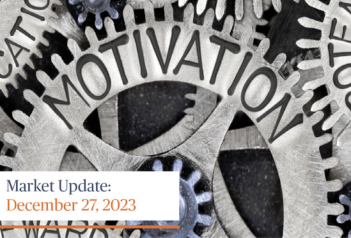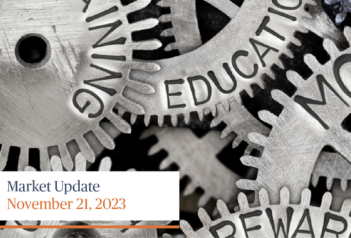Like most Americans, I have been watching the recent events in our cities and streets. Some will see peaceful protests for racial equality and justice, others will see violent riots driven by a political agenda.
During that same time, the S&P 500 Index has retraced 76.4% of the 2020 bear market and is flat for the year. Some will see a market that is pricing an economic recovery as businesses are reopening and consumers are able to spend again after being at home for two months, others will see a market that is disconnected with the economic reality and driven up solely by the monetary and fiscal responses from the Fed and Congress.
Even the recent economic data is subject to interpretation. Case in point is the employment data: while the unemployment rate has jumped from 4.4% in March to 13.3% in May, the recent trends, or the “second derivative” as known on Wall Street, are showing a slower rate of change. Should you focus on the absolute or the relative number?
Before I review a couple of charts to make my point, let me humor you by pointing to some very entertaining and funny economic charts that can be googled. Spurious correlations (when two things appear related but in reality, are not) are plain comical: did you know the divorce rate in Maine has an almost perfect correlation with the U.S. per capita consumption of margarine?
This first chart from the Department of Labor shows the weekly seasonally adjusted initial jobless claims as of June 5th- you can see the spike starting in March due to COVID-19. The picture it paints is a stark economic reality for many who have lost their jobs.

This second chart is the same claims data since March 20, but I want to highlight the market expectations in red versus the actual number in blue. The difference, or delta, versus the two was more severe in March (which makes sense given the sudden economic stop). More recently, economists have done a better job forecasting the data. The question is what makes for better economic news? Yes, the delta is narrower and trending lower, but we are still witnessing millions of unemployment claims filed week after week.

The third and final chart is taking these weekly initial jobless claims into a rolling, or continuing (two straight weeks of unemployment), graph as of May 22.

As opposed to the first chart, the continuous claims data – the total number of Americans claiming unemployment benefits- increased. While it may well have peaked earlier in May, the question is how fast will it take for the labor market to bottom over the next few weeks or months? And is that anticipation why stocks have rebounded?
The phrase “lies, damn lies, and statistics” often refers to the persuasive power of numbers to bolster weak arguments. Economists had forecasted a decline of 7.5 million in payrolls and a jump in the unemployment rate to 19%…last week, payrolls rose by 2.5 million and the unemployment rate fell to 13.3% in May. As of today, the expectations are for the June unemployment rate to fall further to 12%…yet the Bureau of Labor Statistics says that some misclassification may mean revisions to the prior data. If all these numbers make you dizzy, that is the point.
While recent improvement in the economic data and some preliminary success reopening the economy has supported the outperformance of cyclical stocks relative to defensive stocks, we recognize the market cares much more about the direction of the data rather than the actual level, for now. However, the data itself will likely be mediocre in the medium term, and as the rate of change slows, markets will be forced to focus on the fundamentals. And that is what we want to see.
If you have any questions or want to have a conversation about the market or your portfolio, please contact Liz, Ed, Fred, Scott, Tyler, or myself. Your Sendero team is ready to help.
Best Regards,

Amaury de Barros Conti
Vice President, Research & Strategy
210-930-9409
aconti@sendero.com


